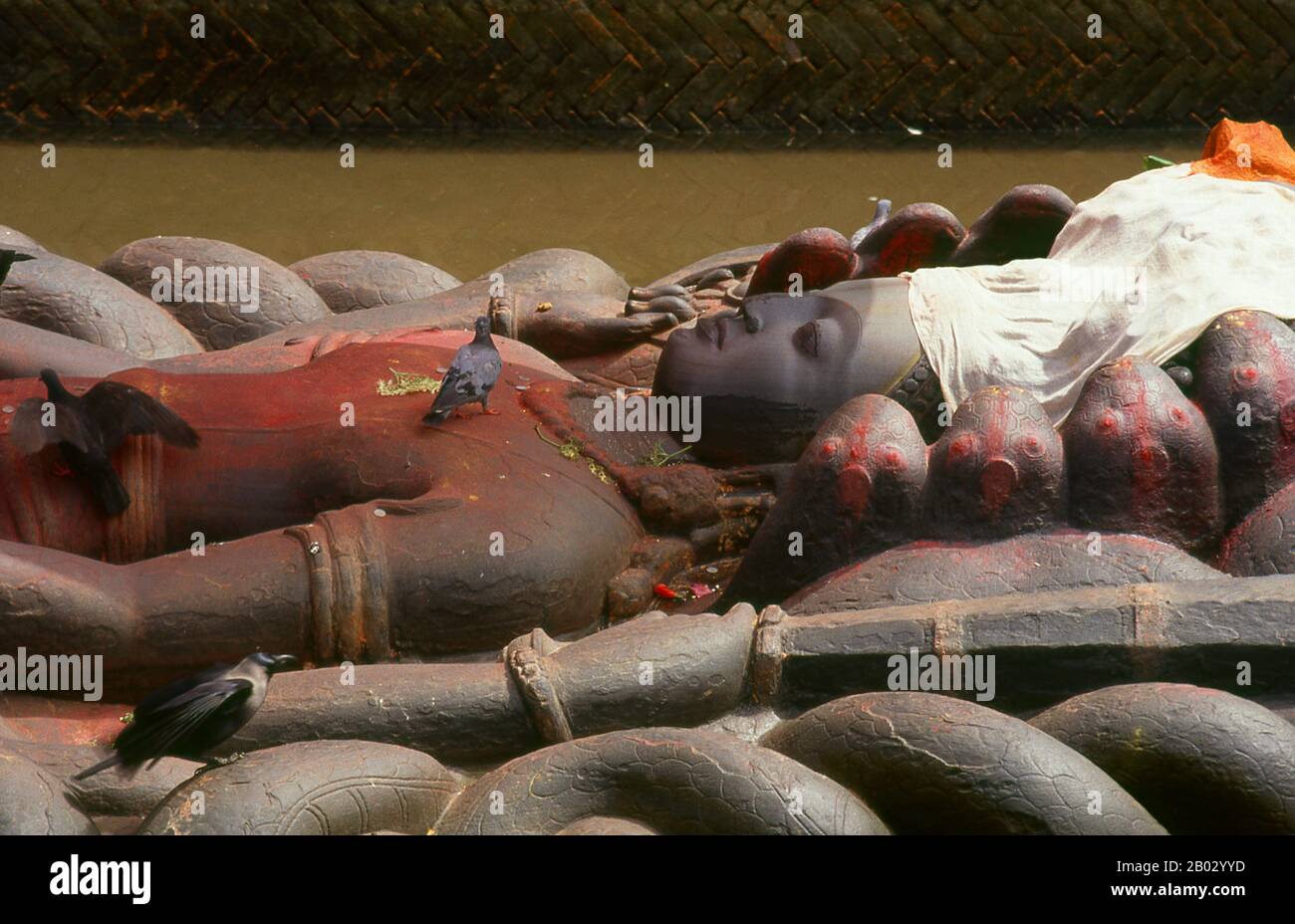The Vishnu figure of Budhanilkantha is a 4.5 metre long, intricately carved figure depicting Vishnu sleeping on the ground of the cosmic ocean, on a 'bed' of intertwining snake bodies, which are all part of the eleven-headed giant snake Ananta, 'The Endless One'. The figure probably originated in the 7th century and is hewn out of a single piece of rock. According to legend, Budhanilkantha was discovered by a farmer while ploughing his field; the plough snagged on the figure, which was buried underground, and, to the farmer’s great surprise, the figure began to bleed. Budha means 'mud' and Ni

Image details
Contributor:
CPA Media Pte Ltd / Alamy Stock PhotoImage ID:
2B02YYDFile size:
50 MB (1.4 MB Compressed download)Releases:
Model - no | Property - noDo I need a release?Dimensions:
5205 x 3359 px | 44.1 x 28.4 cm | 17.4 x 11.2 inches | 300dpiDate taken:
7 August 2015Photographer:
Pictures From HistoryMore information:
This image could have imperfections as it’s either historical or reportage.
The Vishnu figure of Budhanilkantha is a 4.5 metre long, intricately carved figure depicting Vishnu sleeping on the ground of the cosmic ocean, on a 'bed' of intertwining snake bodies, which are all part of the eleven-headed giant snake Ananta, 'The Endless One'. The figure probably originated in the 7th century and is hewn out of a single piece of rock. According to legend, Budhanilkantha was discovered by a farmer while ploughing his field; the plough snagged on the figure, which was buried underground, and, to the farmer’s great surprise, the figure began to bleed. Budha means 'mud' and Nila-kantha is 'Blue Throat'; Budhanilkantha is regarded as a manifestation of Vishnu (not to be confused with a better known incarnation of Vishnu as Nilakantha).